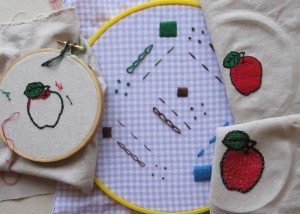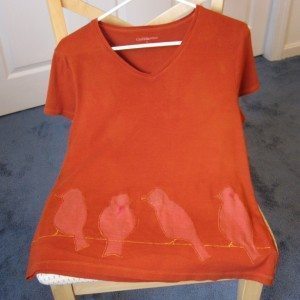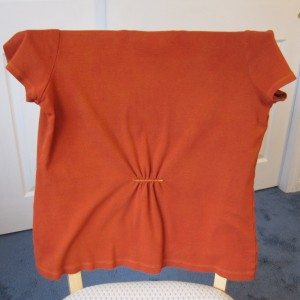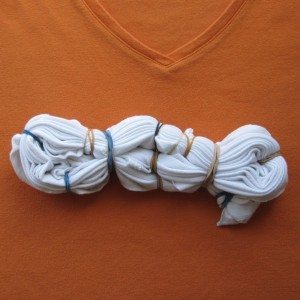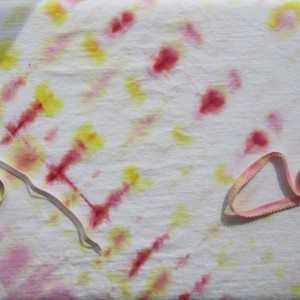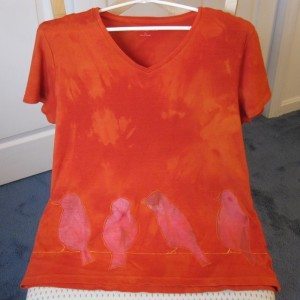As I work on my crochet self-study program, I find many topics I want to investigate. One of those is gauge. I make virtually no items that are gauge-dependent; as long as my stitching is tight enough to hold stuffing and consistent enough to keep the pieces-parts of an amigurumi proportional, it doesn’t matter how big it is.
A couple of examples for the course’s page on tension and gauge expanded into six swatches, every combination of two yarns and three hooks. The results were unexpected, to say nothing of the information on the ball bands. Without further ado, though, the swatches themselves:
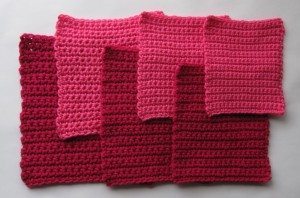
The brighter, lighter pink, in smaller swatches overall, is Caron Simply Soft. The darker pink, larger swatches are Red Heart With Love. I chose these yarns because they are both 100% acrylic and in yarn weight classification 4-Medium, but are otherwise as different as they can be. As you can see below, With Love is visibly thicker; it is also slightly fuzzy, almost chenille-like, and the strands are more cohesive. Simply Soft is almost slick in its smoothness and has a tendency to split.

To find out to what degree my impression of thickness reflected objective reality, I calculated the WPI (wraps per inch; basically the number of parallel strands that can be lined up within an inch) of each yarn. I don’t have a lot of confidence that I was doing it completely correctly, but I measured a WPI of 8 for With Love and 10 for Simply Soft. That’s a significant difference! According to Ravelry, both should have WPIs of 8, though that makes me think the WPI was not actually calculated for each, but just assigned according to weight class. Which makes it not so useful.
I did not expect to be anywhere close to the gauge on the yarn label (ball band). I know PlanetJune discovered one yarn brand where a recent skein had yarn that was measurably thinner than an older skein’s contents, but the ball band’s gauge information was unchanged. That led me to be suspect of all of them, in addition to my experience being very different from stated gauges in the past. Before starting the swatches, my theory had been that for yarn substitutions, yards per ounce would be a better comparison point than the gauge on the label. However, I discovered something totally counterintuitive: Simply Soft gives you slightly fewer yards per ounce than With Love. That is, Simply Soft is enough denser than With Love that despite being so much thinner, if you weigh equal lengths of each kind of yarn Simply Soft will be a bit heavier. So that theory went out the window.
The swatches above were made with F (3.75mm), H (5mm), and K (6.5mm) hooks, chaining 20 and single crocheting 25 rows. The hooks were chosen because F is a typical amigurumi hook for me, H was recommended on the Simply Soft label, and K was recommended on the With Love label.
And now, the gauges:
| sc per 4″ (10cm) | rows per 4″ (10cm) | |
| Simply Soft F | 16 | 18.7 |
| With Love F | 13.3 | 14.5 |
| Simply Soft H | 14 | 17 |
| With Love H | 11.2 | 12.8 |
| Simply Soft K | 11.4 | 14.5 |
| With Love K | 9.6 | 11.8 |
A few observations: for me, same-width single crochets in thinner yarn are shorter than those in thicker yarn. The middle four rows of the table make it look like a 1.5mm change in hook size about accounts for the yarn in terms of stitch width (the difference between H and K; F and H are only 1.25mm apart, though there is no guarantee moving down to E/3.5mm wouldn’t overcompensate), pictured below. If I were to take a pattern for With Love and want to make a more open, drapier version of it with Simply Soft, my first move would be to go up 1.5mm in hook size, and then try using extended single crochet to increase the height, though perhaps only every other row.
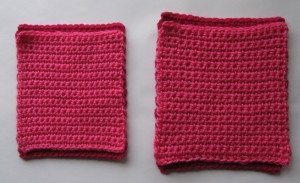
Rather to my surprise, my stitches were larger than the label gauge. The With Love label said that using a K hook there should be 14 stitches and 14 rows to obtain a 4″ square. I only needed about 10 and 12, respectively. My F hook swatch was much closer than my K hook swatch! The gauge for Simply Soft with an H hook was 18 stitches and 24 rows, whereas I only needed 14 and 17. Even my F hook swatch was too large.
More investigation is needed. In particular, I’d like to know whether I’m always larger than the label gauge, and whether it’s by a consistent amount (proportion). There is always something to learn.
